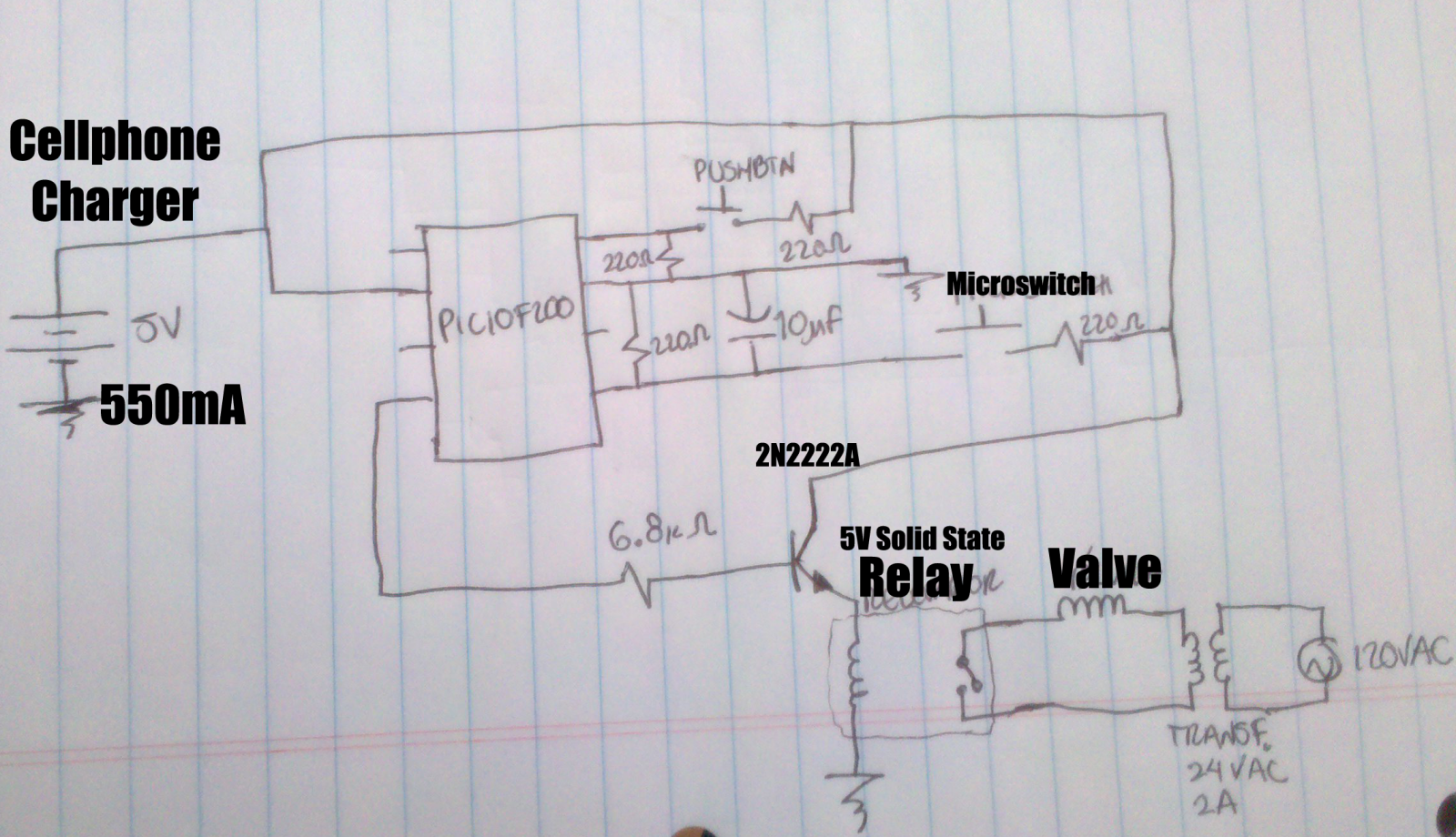I'm developing a control system for an electrovalve with a microcontroller. The electrovalve functions with 24VAC and consumes between 1.5 and 1 Ampere. My initial testing configuration used a 5V Cellphone charger to supply the microcontroller, a transistor and a relay; while the electrovalve was conected with the relay to a 24V-2A Transformer. This worked perfectly, so I moved on to the design of my power supply (to avoid using the charger, as I want to use only one power supply for the whole thing); this is where things get nasty:
-The power supply seems to work fine without anything connected, however, when it is supplying the circuit and the electrovalve is activated a brown out occurs and the microcontroller is reset.
-I am using a 7805 as regulator and it heats after sometime,
-I do know there is a design flaw in the power supply, but I don't know where exactly. I have searched the Internet for 5V power supplies and most people do them the way I do.
-I am also sure that the problem does not come from the transfomer (e.g. the circuit needing more current) as if I connect another 24V transformer just for the electrovalve, the brown out still occurs.
Here's my circuit:

The design of the power supply is as follows:
24VAC Transformer ---> Rectifier Diode Bridge --> Filtering with 4700uF ---> 7805
Those are all of the components.
Hope anyone can help, thank you!
-The power supply seems to work fine without anything connected, however, when it is supplying the circuit and the electrovalve is activated a brown out occurs and the microcontroller is reset.
-I am using a 7805 as regulator and it heats after sometime,
-I do know there is a design flaw in the power supply, but I don't know where exactly. I have searched the Internet for 5V power supplies and most people do them the way I do.
-I am also sure that the problem does not come from the transfomer (e.g. the circuit needing more current) as if I connect another 24V transformer just for the electrovalve, the brown out still occurs.
Here's my circuit:

The design of the power supply is as follows:
24VAC Transformer ---> Rectifier Diode Bridge --> Filtering with 4700uF ---> 7805
Those are all of the components.
Hope anyone can help, thank you!

